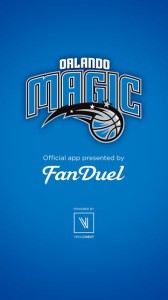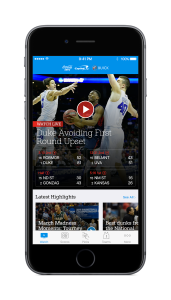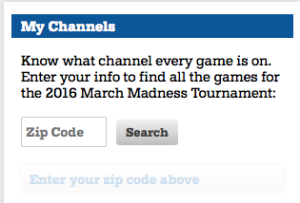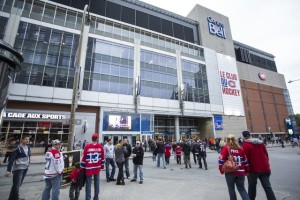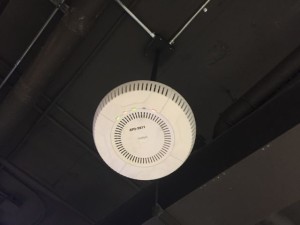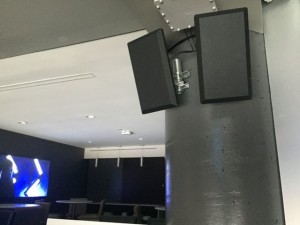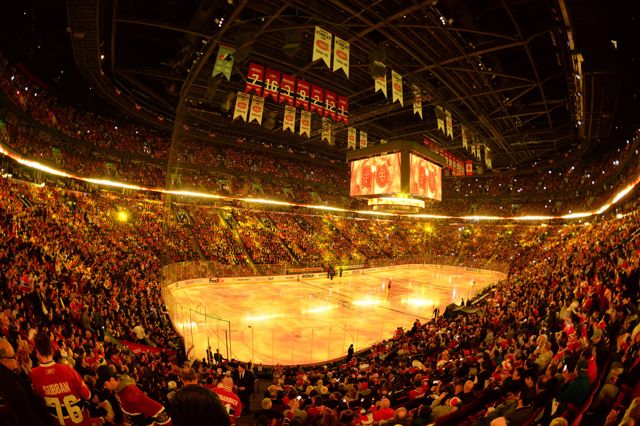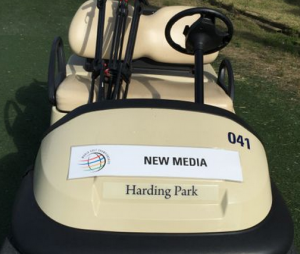New this year for fans at the Magic’s stadium, the 20,000-seat, Wi-Fi equipped Amway Center, the VenueNext-designed app is already generating new direct revenue of $500,000 through in-app advertisement sales, while also being used by fans to order food and drinks that can either be picked up at an express window, or for certain sections of the stadium, delivered to the seat.
With the NBA season just past the halfway point, VenueNext and the Magic said that the number of fans attending games in Orlando using the app on a monthly average is showing an almost 96 percent increase from last year and the team’s previous app. So far this year 30 percent of attendees have used the app, a figure at the high end of team-app usage.
Perhaps most interesting from a marketing standpoint is the stat claiming that 80 percent of season-ticket holders have used the app to gain entry to the arena and to manage their tickets, activity that can be mined by the team for marketing info. According to the team and VenueNext, mobile entry to the stadium has reached 26 percent of all fans, an increase of 200 percent over figures from last season.
Fast deliveries, increased ticket sales
Though neither the team nor VenueNext would provide any stats for average food orders placed per game or how many have been placed so far this year, they did say that deliveries — available to just a part of the stadium right now — are taking an average of 5 minutes and 26 seconds to complete. The ability to use the app to order in-seat delivery of food, drink and merchandise is one of the hallmarks of the VenueNext app used at Levi’s Stadium for San Francisco 49ers home games. At the recent Super Bowl 50 at Levi’s Stadium, the app allowed fans to order only drinks for delivery and food for express pickup; fans at the Super Bowl placed 3,284 food and beverage orders through the app, a stadium record.
The team also said that fans have been using the app to purchase more of the “Fast Break Pass” products that provide discounts for multiple-game purchases that aren’t full season tickets. According to a blog post by Orlando Magic CEO on the VenueNext website, the app has allowed the team to greatly expand its flexible-pass offerings:Fast Break Pass sales are up 233% from last season, in part, because the app has given the Magic the ability to expand to six different Fast Break Pass products that span the entire course of a season, providing a unique product for an untapped market. The app also includes added location identifiers so Fast Break Pass holders can receive their seat assignments now once they are within a mile of the arena (previously it wasn’t assigned until they entered the building).
On the sponsorship side, the Magic said it sold the approximately $500,000 of in-app advertising to fantasy gambling outlet FanDuel and to Sun Pass, which we think is a Florida electronic tollroad payment operation. At Levi’s Stadium, the 49ers sold a similar in-app advertising package to eSurance for the 2014 season, producing $750,000 in revenue. The Magic app has a direct link to a FanDuel game.
The Orlando figures are a good selling point for VenueNext, which is still somewhat of a newcomer in the team and stadium app business, trailing leaders like YinzCam, which recently struck a deal to re-do 22 of the NBA team apps. While its performance at Levi’s Stadium and now at Orlando are significant, VenueNext recently fell short of its own publicly announced goal to sign up 30 new customers before the end of 2015, something the company announced when it revealed its $9 million funding round last year.
While some of those new clients may be signed but not yet ready to announce, VenueNext has only announced two other new clients besides Orlando, the New York Yankees and the Dallas Cowboys. Given that one of the investors in VenueNext was concert promoter Live Nation, it’s a good bet that some of the new clients may be concert arenas, and not just more sports stadiums.
